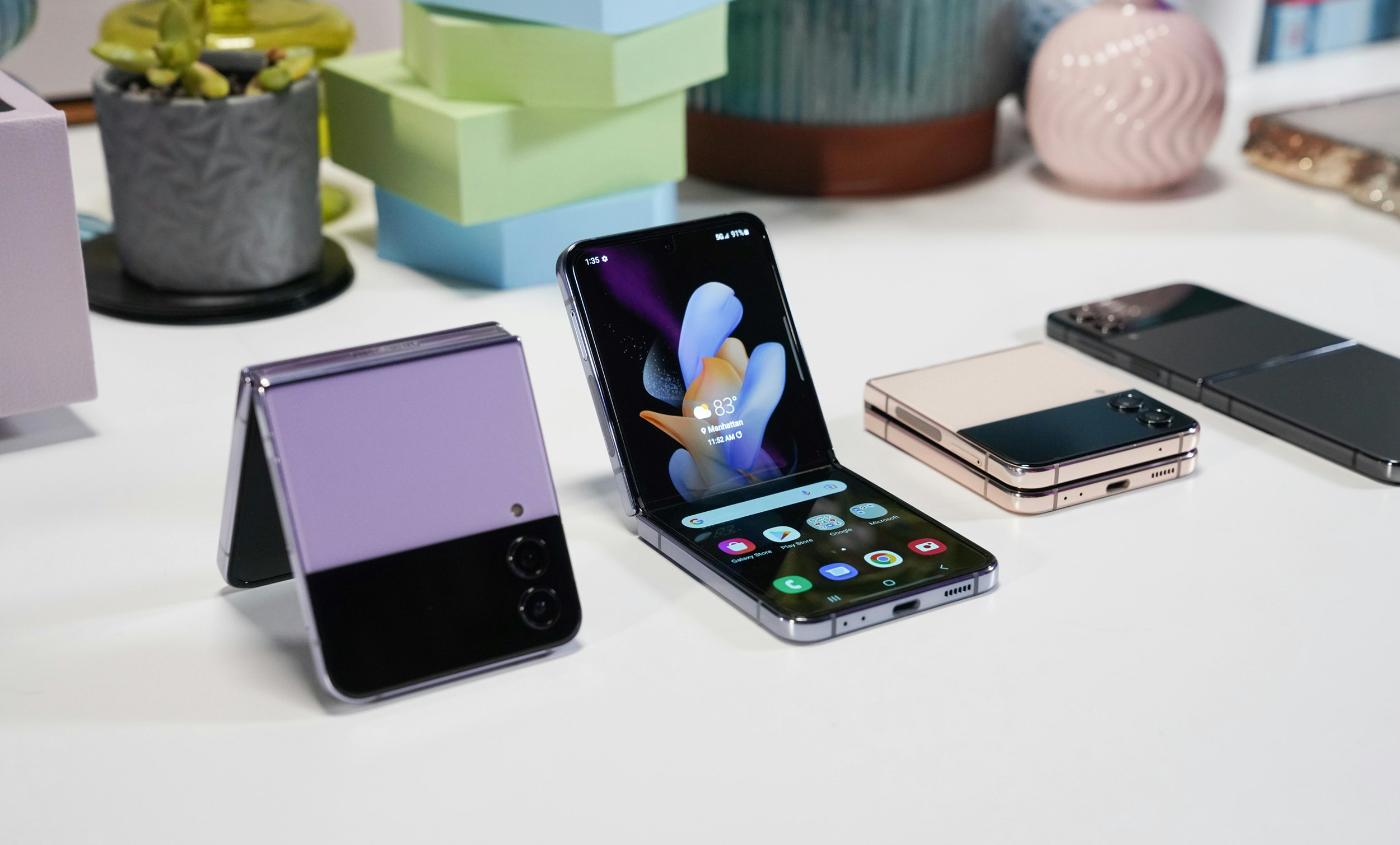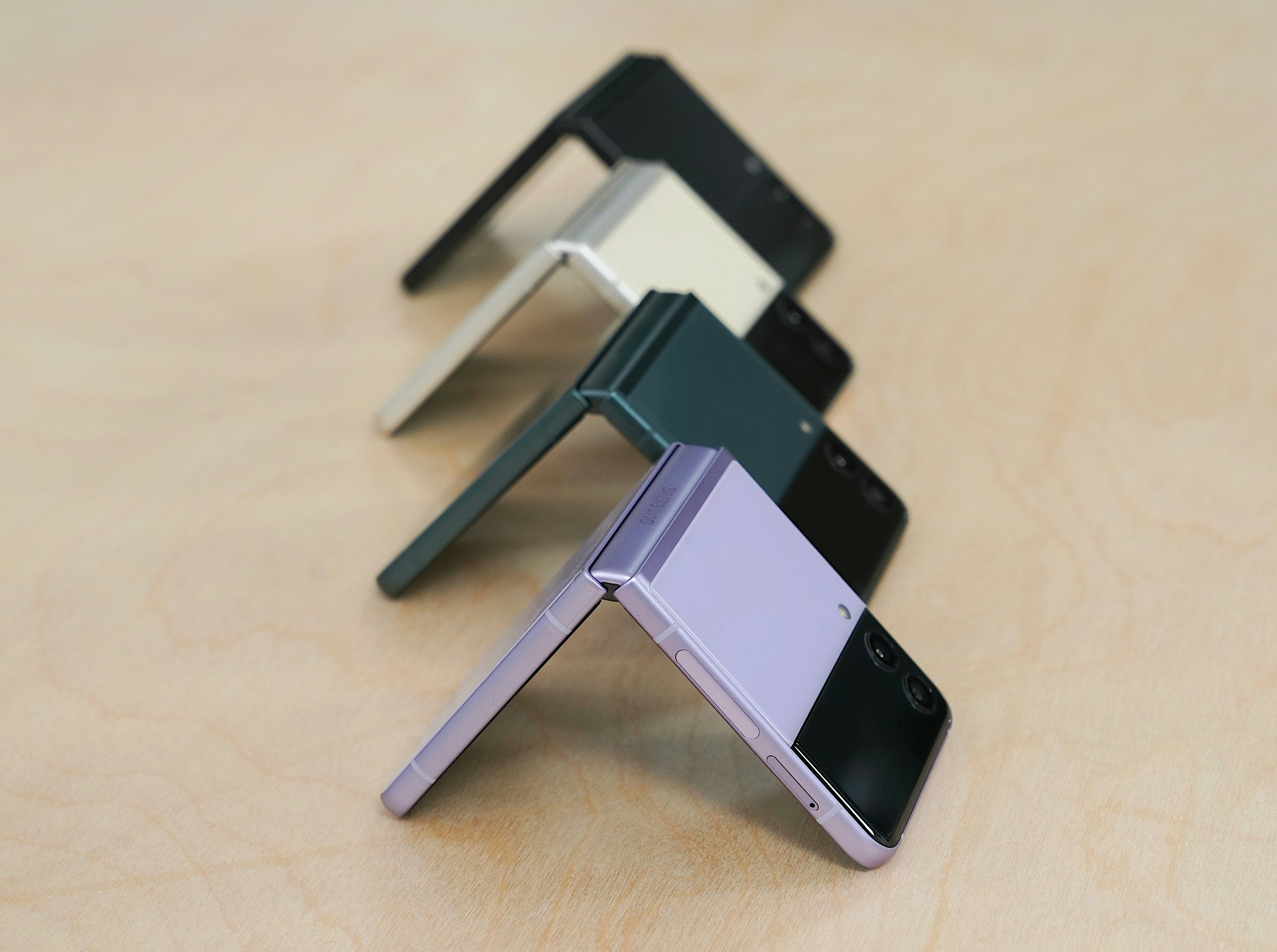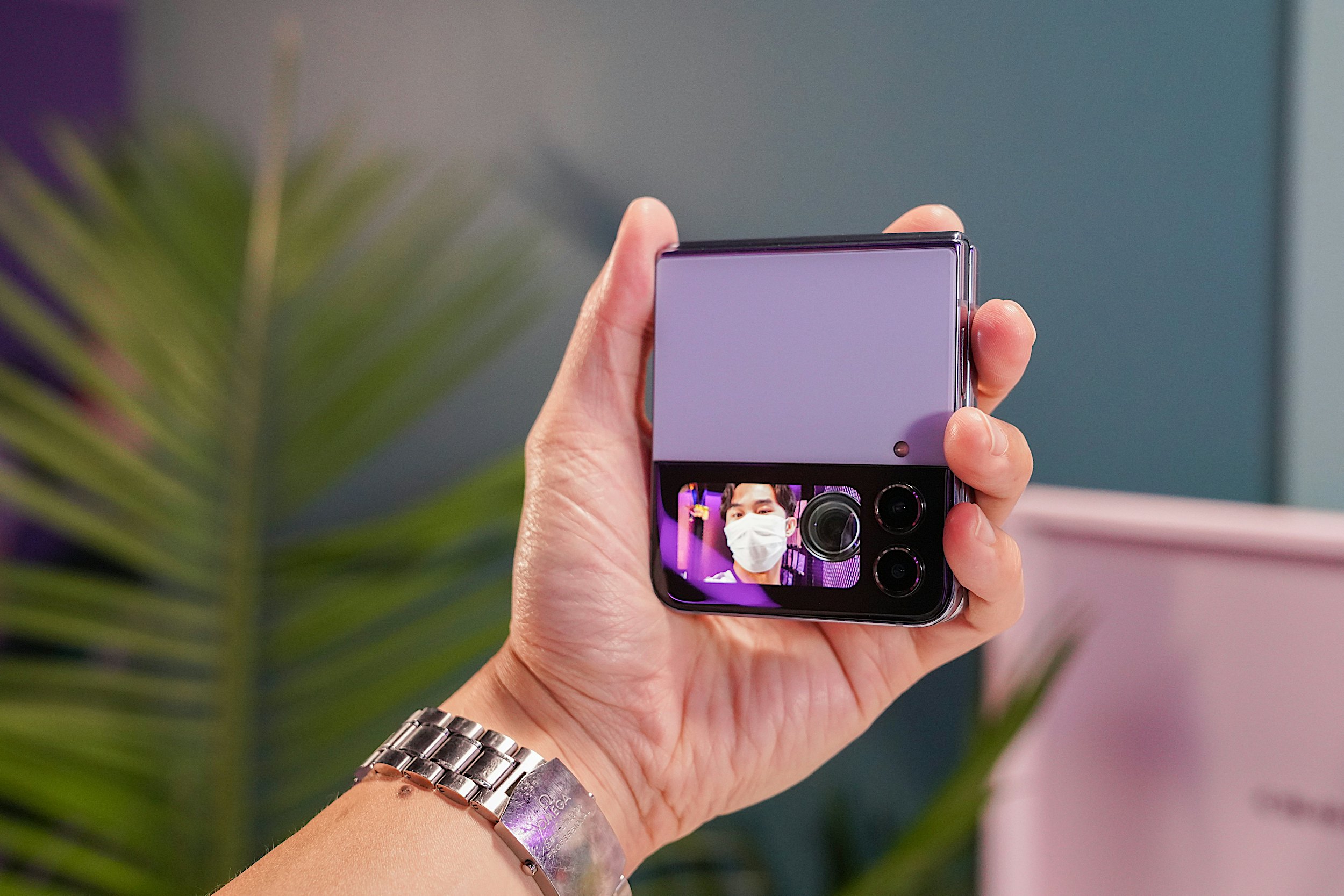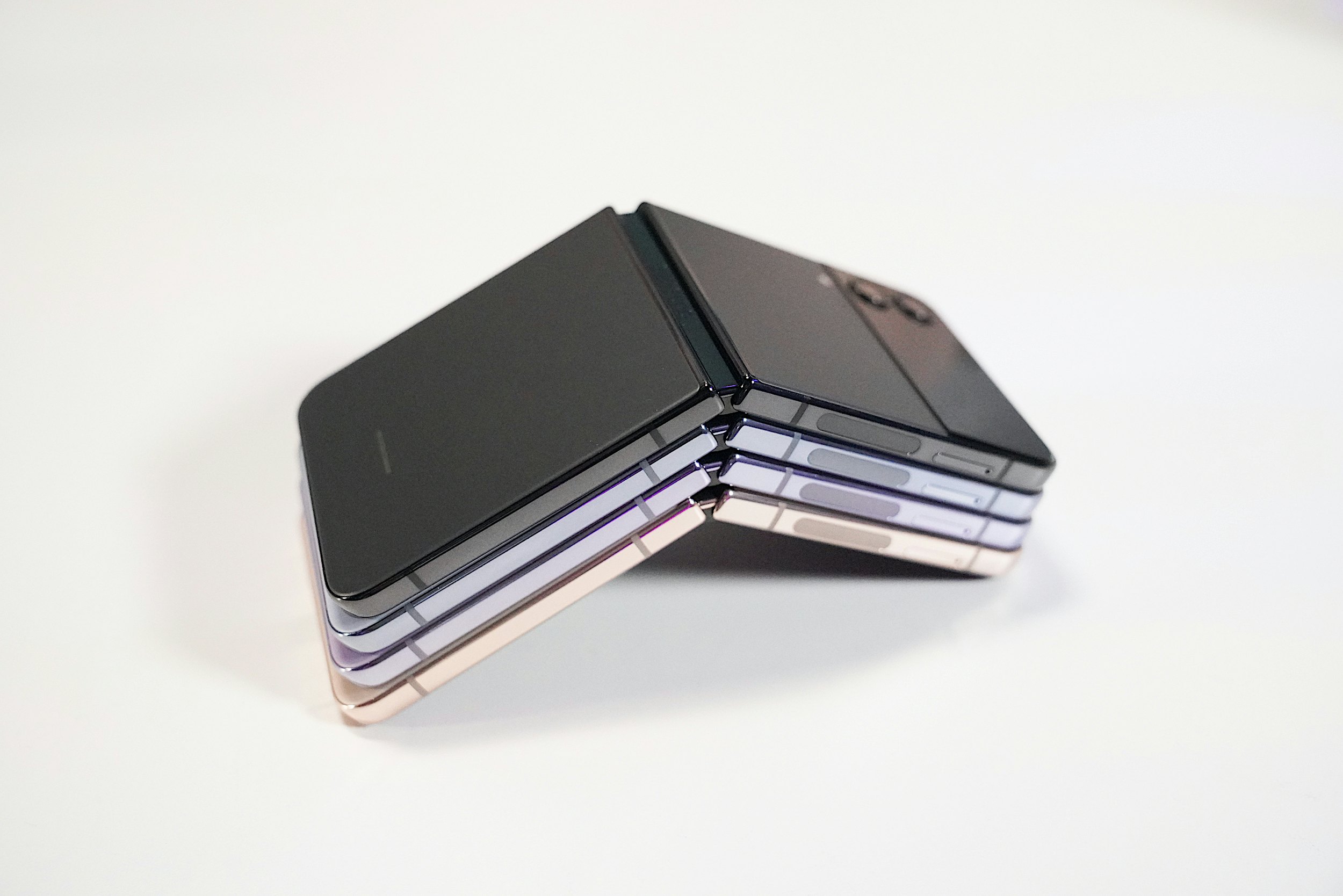
By the time I finally got my first iPhone in the mid-2010s, I’d more or less lost interest in smartphones as anything beyond a means for calling, texting, and taking pictures.
The slab touchscreen form factor had fully taken over and the last holdouts of a more eccentric design era were gasping their final breaths. Spotting a physical QWERTY keyboard in the wild was like glimpsing a living fossil; sliding designs had faded mostly into memory. Phones on the whole were getting flatter and bigger, less weird and more rectangular, and that’s just the way it’d be. The term “phablet” emerged, and its influence has haunted me since.
Boring as it may be, the slab caught on and stuck around because it works. It’s functional and reliable — something many of the fun phones of yore were not as they so often sacrificed practicality for uniqueness and durability for intrigue. Long-term usability is important, increasingly so with ever-rising smartphone prices, and experimental phones tended not to deliver. This is a fact I begrudgingly accepted.
So, one day, faced with a homogenous spread of products in the store, I got an iPhone because it seemed sufficient, and moved on with my life. I didn’t love it, but I didn’t hate it, though the size increases with each subsequent generation grew to be a thorn in my side. An iPhone for me wasn't some grand revelation, it simply served its purpose.
Then, a few years later, foldables entered the picture, and quirky-but-compact phones were back on the table. And once I got a Galaxy Z Flip, I knew there was no going back to an iPhone, even for iMessage.
THE CLAMSHELL RETURNS

The first wave was expensive book-style foldables that opened into tablets. Royole released the FlexPai, marking the first foldable phone to hit the market. Samsung was simultaneously scrambling to get its Galaxy Fold (with no “Z” yet) out the door and Huawei was readying the Mate X.
Then, almost overnight, came the second wave: flip-style foldables. In 2019, the rumor mill was ablaze with reports of an impending Motorola Razr revival in foldable form. Exciting as the possibilities of foldables were, reviews for both form factors throughout that year and into 2020 were a horror show. Phone makers were undeterred, though, because they were already prepping second-gen devices. It was clear both that foldables still needed some serious ironing-out, and that they were about to be everywhere. My interest was piqued.
I watched, and I waited, and when Samsung released the Galaxy Z Flip 3 in 2021, I took the plunge. I didn't care that it ran Android instead of iOS. That first day, turning the square-shaped device over and over in my hands after unboxing it, opening and closing it and running my finger over the display’s smooth crease, I experienced something I hadn’t in a long time: new phone excitement. And, to my relief, the Galaxy Z Flip 3 didn’t let me down after a few weeks of use.
In contrast to the pretty neutral opinion I held of my iPhone, there are a lot of things I love about my Z Flip.
Now two years in and onto the Galaxy Z Flip 4, there’s no way I could go back. In contrast to the pretty neutral opinion I held of my iPhone, there are a lot of things I love about my Z Flip, some being the features that drew me to it in the first place, and others being the little surprises I learned along the way.
Paramount is the square, compact build. I’d forgotten what it was like to have a phone that just easily slipped into pants pockets — and front pockets. With 6-inch-plus rigid displays, today’s rectangular phones aren’t so pocket-friendly, especially in tighter-fitting pants. The phone is often left sticking halfway out, making it not only easy for someone else to snatch, but leaving it constantly at risk of dropping as slight movements push it up and out. My iPhone 11, the last iPhone I had before switching, felt precarious in my pocket but too cumbersome to hold in my hand all the time.
The Z Flip nestles securely in the front pockets of my jeans. It’s fully in there, smaller than a lot of wallets. I’ve found I leave the house without a bag more often these days, now that I don’t have to worry about how I’m going to carry my phone if I don’t want to keep it glued to my hand. In situations where I don’t have pockets, like when wearing leggings, I’ve even taken to closing it over the waistband for hands-free carrying. (You shouldn’t do this, but it goes to show you how comfortable I’ve gotten).
When I am just holding the Z Flip in my hand, it feels like a perfect fit. It’s palm-sized when the clamshell is closed, so I can just carry it around inconspicuously. I love a square phone that unfurls into something more, and the Z Flip immediately reminded me of two favorites from my past: the Samsung Reclaim and the BlackBerry Style 9670. I get the best of both worlds, having access to that 6.7-inch inner screen for tasks that require it without having to commit to lugging around a smartphone of that size all the time.
UNIQUELY FUNCTIONAL
It isn’t just about the size, though. The Galaxy Z Flip’s flip-phone styling opens up a ton of unique practical uses that iPhone could never offer due to its design. Its ability to sit up on its own is a game changer for taking selfies and group photos, or recording stable videos, allowing it to serve essentially as its own tripod. Most often, I use the much better rear camera instead of the selfie camera because I can just plop the phone onto any nearby surface and angle it precisely for the perfect picture. With the Z Flip’s cover screen for previewing photos, there’s none of the guesswork that comes with turning the rear camera toward yourself. It’ll also show a countdown for timed photos, and a progress wheel for gesture-activated selfies so you aren’t left wondering if it actually took the picture or if you made it in on time.
My iPhone 11’s selfie camera was great, sure, but I don’t miss the awkward maneuvers I had to pull to get a good shot with my arm stretched and trembling. Its heft was hard to balance in my arthritic fingers, and I dropped it a lot. If I wanted to prop my iPhone up to take a timed photo using the rear camera, I’d have to hack together a DIY stand using random objects or lean it flat against something, limiting the shooting angle.

The multitasking experience I get with the Z Flip is wonderful. Samsung’s Galaxy phones all offer split-screen, multi-window capability, meaning you can open two apps at once and adjust how much of the screen each takes up. Being able to fold the Z Flip to prop it up once again adds another level of practicality. I can sit the phone on a table like a tiny laptop and have YouTube running in the top window while the Notes app is opened in the bottom window, allowing me to furiously type notes on my latest obsession as I watch. The closest iPhone has to this type of multitasking is picture-in-picture, which pales in comparison. The floating window blocks portions of whatever app is open beneath it, which can be annoying, and its contents are often too small to see without straining.
The Z Flip build brings optimization options for single apps, too, and for peace of mind if I’m trying to cut down on screen time. Certain apps will open in a specially formatted Flex Mode when the phone is folded, turning the bottom display into a touchpad or presenting more convenient viewing/listening control buttons. When the phone is closed, the cover display shows enough at-a-glance info to be genuinely useful, not requiring me to open it every time I feel a notification buzz or need to pause the music.
HERE TO STAY

When I first got my Galaxy Z Flip 3, I carried it around like an egg on a spoon, scared that I’d break it if I wasn’t being extra careful. That didn’t last long. Depending on my mood, I’ve kept it in either a case offering bare minimum protection or just gone without, and the phone has held up. I’ve dropped it, brought it to the beach despite its non-dust-resistant IPX8 rating, and on more than one occasion found it sitting in shallow puddles of water from iced coffee condensation runoff. It was fine.
Just do not take the screen protector off. Ever. If the factory-installed screen protector needs replacing, make sure it’s done all at once — don’t just take the old one off and wait around to get a new one — or have a Samsung professional do it. That was the thing that finally murdered my Z Flip 3. After a year of use, the screen protector was splitting and flaking at the crease, obscuring my view of the display and irritating my fingers when I swiped. So I removed it and was slow to replace it. Then, a few days later, the top screen was broken seemingly out of nowhere, with no drops to explain its unresponsiveness and concerning internal cracks snaking up the display. When I took it into the store, the attendant told me microscopic dust was likely to blame, which Samsung’s warranty doesn’t cover. I mourned my beloved first foldable, dead because of my own negligence, and traded it in for the newer model.
That was a year ago. Now, the Galaxy Z Flip 5 is newly available and I desperately want it… but I don’t exactly need it. My year-old Galaxy Z Flip 4 is still perfectly fine.
I finally have a phone that feels fun... but also works as a solid, reliable device that earns its $1,000 price tag.
The main thing that kept me buying iPhones previously was that I could make them last. I didn’t upgrade every year, but could push each device to its absolute limit. I worried that when I switched to a foldable, I’d end up with an expensive new toy that needed to be replaced much too soon. My Galaxy Z Flip 3’s untimely end had those concerns creeping back up, but I ultimately chose to stick with it, and I’m glad. I’ve crossed the one-year milestone with its successor now, and there’s no sign of the Galaxy Z Flip 4 crapping out on me any time soon. (You can be sure I won’t make the screen protector mistake twice). Unless I succumb to the temptation of having the latest and greatest version, I can likely hang onto it until a Galaxy Z Flip 6 arrives.
As dutiful as my iPhones were, they were also unwieldy and brought me no joy. A new iPhone is still an iPhone. It might look a little different and have a faster chip or better cameras, but it's still a boring glass slab. My Galaxy Z Flip, though? It's easier to carry around thanks to its folding design, it's arguably more functional, and it's cute as hell. I finally have a phone that feels fun — one that invites the occasional, “Is that a phone?!” exclamation in public and has strangers asking if they can watch the screen bend — but also works as a solid, reliable device that earns its $1,000 price tag.







